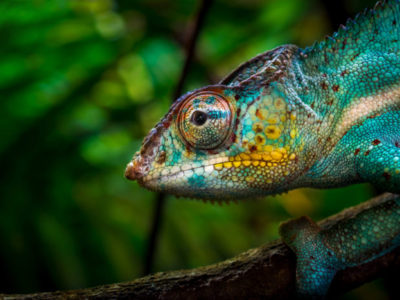“Net Zero” is an increasingly common goal related to climate change, and a related goal of “No Net Loss” for biodiversity is gaining traction. In fact, “No Net Loss” is the equivalent of carbon neutrality, where a positive impact, such as biological restoration, balances a negative impact on biodiversity.
Biodiversity refers to all the different kinds of life one finds in an ecosystem – animals, plants, fungi, and microorganisms. Ecosystems are physical places such as tropical rainforests, coral reefs, deserts, or grasslands. And biodiversity supports everything people need to survive, including food, clean water, medicine, and shelter.
Therefore, biodiversity and ecosystems are valuable assets. However, despite our dependence on nature, people are depleting nature’s resources faster than the resources have time to replenish. As a result, nature, biodiversity, and ecosystem functions and services are deteriorating at an increasing rate worldwide.
This decline is concerning in itself. But it is even more so because thriving ecosystems and healthy biodiversity play a critical role in controlling climate change. For example, nature-based solutions are essential to realizing Paris Agreement climate goals. Yet climate change threatens to undermine efforts to preserve the biodiversity on which nature-based solutions rely.
Often actions aimed at either preserving biodiversity or reducing the impact of climate change, result in improvement in both cases, as these examples show:
- Ending the loss and degradation of ecosystems that affect both biodiversity and climate change, including forests, wetlands, peatlands, grasslands, savannahs, mangroves, salt marshes, kelp forests, seagrass meadows, and deepwater habitats.
- Helping biodiversity to be more resilient to the effects of climate change through flood regulation, coastal protection, reduced soil erosion, and ensuring pollination.
- Diversifying planted crops and forest species and managing crop and grazing systems with soil conservation and regenerative agriculture that preserve biodiversity and store carbon.
For this reason, companies are increasingly making strategic biodiversity commitments to ensure their long-term viability. Here are three examples from companies in different sectors:
Schneider Electric integrates digital energy technologies and automation to improve the efficiency and sustainability of industrial processes for their company and their sustainability consulting portfolio. The company is committed to achieving net-zero biodiversity loss by 2030 and developing new solutions and technologies to preserve biodiversity. In 2020, they published the first complete value chain biodiversity footprint using the Global Biodiversity Score. And, they are working with suppliers to eliminate single-use plastics to reduce CO2 emissions and protect oceans. The company emphasizes a commitment to local solutions to build trust and inclusion.
LVMH is a family-owned, global luxury business in the wine, fashion, cosmetics, jewelry, and retail sector that connects biodiversity and climate change. Biodiversity is essential to their strategy because they are dependent on raw materials such as flowers, grapes, cotton, leather, stones, etc. The company has committed to rehabilitating 5 million hectares of habitat for flora and fauna by 2030. The group uses life-cycle analysis with geolocated biodiversity indicators and is developing certification systems for biodiversity standards. Partnering with UNESCO, they are implementing a 5-year program to train new beekeepers, establish beekeeping operations worldwide, and measure the benefits of pollination.
Biota supplies hobbyists with saltwater aquarium fish that have been carefully raised in captivity at their marine life nursery so that they are acclimated for aquarium life. Traditionally, 90% of saltwater aquarium fish are taken from reefs, causing damage to the reefs, coupled with a low fish survival rate. Biota’s team of marine experts and conservationists have developed new methods of culturing fish for saltwater aquariums, so they don’t have to be taken from nature. They have cultured more than 100 types of fish, including endangered species, with the intent to restock depleted reefs.








